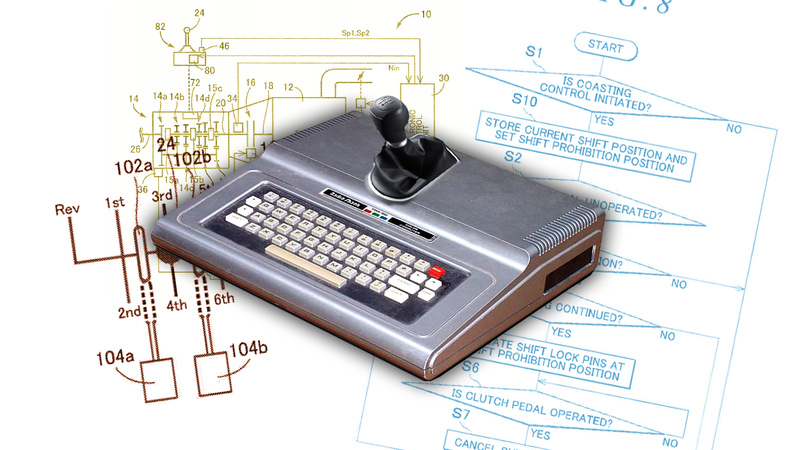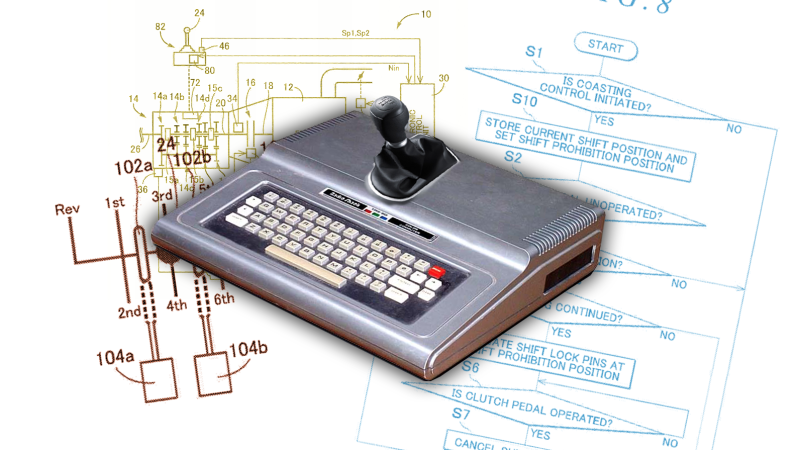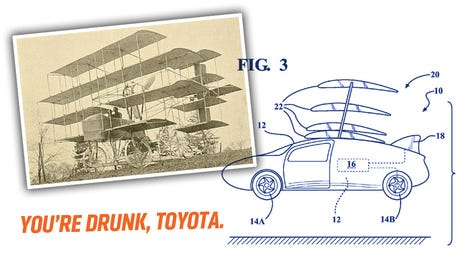
I’m pretty sure that none of our readers who drives a car with a manual transmission has ever looked down at their shifter and exclaimed “I sure wish this was a hell of a lot more complicated, needlessly!” I’m pretty sure. I can’t say the same for some Toyota engineers, who have patented an electronically-controlled manual transmission that I have no idea who would want.
The patent is from January, and it came to our attention via this post over at Motor1. I took a look at the patent itself, and it’s pretty confusing. A lot of that confusion comes from the strange, other-universe logic of patent language. For example, look at this flow chart of how the transmission works, and note how they choose to indicate if the clutch pedal is pressed or not:
“IS CLUTCH PEDAL UNOPERATED?” So, if yes, then that means, no, the clutch is not operated. Or maybe, yes, the clutch is un-operated. Or both. And, if no, that means, yes, it is not not operated. Which means it is operated. Ow. I think I pulled a think-gland.
Advertisement
Anyway, according to the abstract, this is what this transmission does:
An electronic control unit permits a shift operation to a neutral position, by which a manual transmission 14 is switched to neutral, during coasting control. Accordingly, shifting to the neutral position can be performed only by the shift operation. Thus, power transmission can be blocked after termination of the coasting control. In addition, the electronic control unit prohibits the shift operation to a particular gear after the transmission is switched to neutral. Thus, overreving or underreving at the termination of the coasting control can be suppressed.
Okay, so from what I can tell, the transmission has a little computer that’s watching all kinds of things, specifically vehicle speed and engine speed, and when it detects the clutch engaged (you know, not not operated) and the shifter in the neutral position, it leaps into action.
Advertisement
It looks like one of the big goals of this transmission is to prevent overrevving and underrevving the engine when shifting; say, if you’re going 70 mph and try to downshift into second, or if you’re at a stop and accidentally put the shifter in 3rd or 5th instead of 1st.
To keep these embarrassing and potentially engine-harming things from happening, a series of shift lock pins are deployed to make it impossible to stick the car in the wrong gear for the given engine RPMs.
I’m guessing all this compu-math happens in the brief interval when the clutch is down and the shifter passes through the N position—what the document refers to as ‘coasting control.’
I guess I can see some usefulness here, as trying to start in 3rd is never fun, and I guess keeping an engine from overrevving in too low a gear is good, but these hardly seem like the sorts of things that would require all this additional hardware and complexity.
Won’t a normal rev limiter be enough to protect the engine? And, when you try and drive in too high a gear, you feel it lugging pretty quickly. Plus, wouldn’t this sort of kill deliberate downshifting and engine braking?
The “shift prohibition” settings are described, confusingly, here:
0065] The shift prohibition position setting section 112 sets the shift prohibition gear shift stage in accordance with a magnitude of the vehicle speed V. FIG. 7 is a graph of a relationship between the vehicle speed V and the engine speed Ne at each of the gear shift stages. As shown in FIG. 7, when each of the gear shift stages is defined, the engine speed Ne is increased as the vehicle speed V is increased. In addition, as the gear shift stage is lowered, the engine speed Ne is increased at the same vehicle speed V. An RED speed Nered in FIG. 7 is an upper limit speed of the engine 12 on a high rotation side (an overreving speed) that is set in advance, and is set at a speed at which seizure of the engine 12 possibly occurs or at a speed at which seizure of a gear in the manual transmission 14 possibly occurs. Alternatively, the RED speed Nered may be set at a speed at which the driver receives a sense of discomfort. An idle speed Neidle is a lower limit speed of the engine 12 on a low rotation side that is set in advance. The idle speed Neidle is set at such a speed that an engine stalls when the engine speed Ne falls below this lower limit speed or a speed at which an oil pump cannot feed a sufficient amount of oil. Alternatively, the idle speed Neidle may be set at a speed at which the driver receives the sense of discomfort. Thus, the gear shift stage, at which the post gear-shifting engine speed Ne falls within a speed range between the idle speed Neidle and the RED speed Nered (becomes a permitted speed), becomes the permitted gear shift stage. Meanwhile, the gear shift stage, at which the post gear-shifting engine speed Ne falls out of the above speed range, corresponds to the shift prohibition gear shift stage.
I think this line is important:
Alternatively, the RED speed Nered may be set at a speed at which the driver receives a sense of discomfort.
But mostly because I’m not clear on if this is being referenced as a good or bad thing.
Advertisement
So, it looks like this is basically a manual transmission with a bunch of extra hardware to keep drivers from making a couple of simple mistakes that pretty much anyone who has driven stick for any amount of time knows pretty much how to deal with.
What’s the point of this, exactly? A sort of more forgiving manual transmission, I guess? I mean, I’m not totally opposed to that if it helps manual transmissions stay viable, but it’s hard not to feel like this misses the point of manual transmissions entirely.
The Computer Just Needs To Assist In Laying Rubber


















